Abstract
The resistance to Mycobacterium bovis (BCG) of lines of mice selected for high (H) or low (L) antibody responsiveness was estimated from the rate of BCG multiplication in the organs. During the first 2 weeks after i.v. infection with 5 X 10(6) CFU, BCG multiplied faster in the spleens of H than of L mice. Afterwards there was a more drastic reduction of viable BCG counts in H mice than in L mice so that the residual BCG counts were significantly lower in H mice than in L mice, not only in the spleen but also in the liver and lungs. On the 14th day of infection, the spleen and liver enlargement and the increase of phagocytic activity were similar in the two lines, suggesting an identical T lymphokine release. In contrast with BCG, during the first 2 weeks after infection with 7 X 10(5) CFU, M. tuberculosis (H37Rv) multiplied in the spleens of L mice at a similar or a slightly faster rate than in the spleens of H mice. On the 4th week, the viable H37Rv counts were reduced in H mice whereas L mice did not survive the infection. In mice vaccinated with BCG 5 months before virulent challenge, the multiplication of H37Rv was inhibited in the H and L lines. The protective effect of BCG is therefore stronger in L mice taking into account their higher innate susceptibility to H37Rv. This might be due to the higher level of living BCG found in L mice at the time of challenge.
Full text
PDF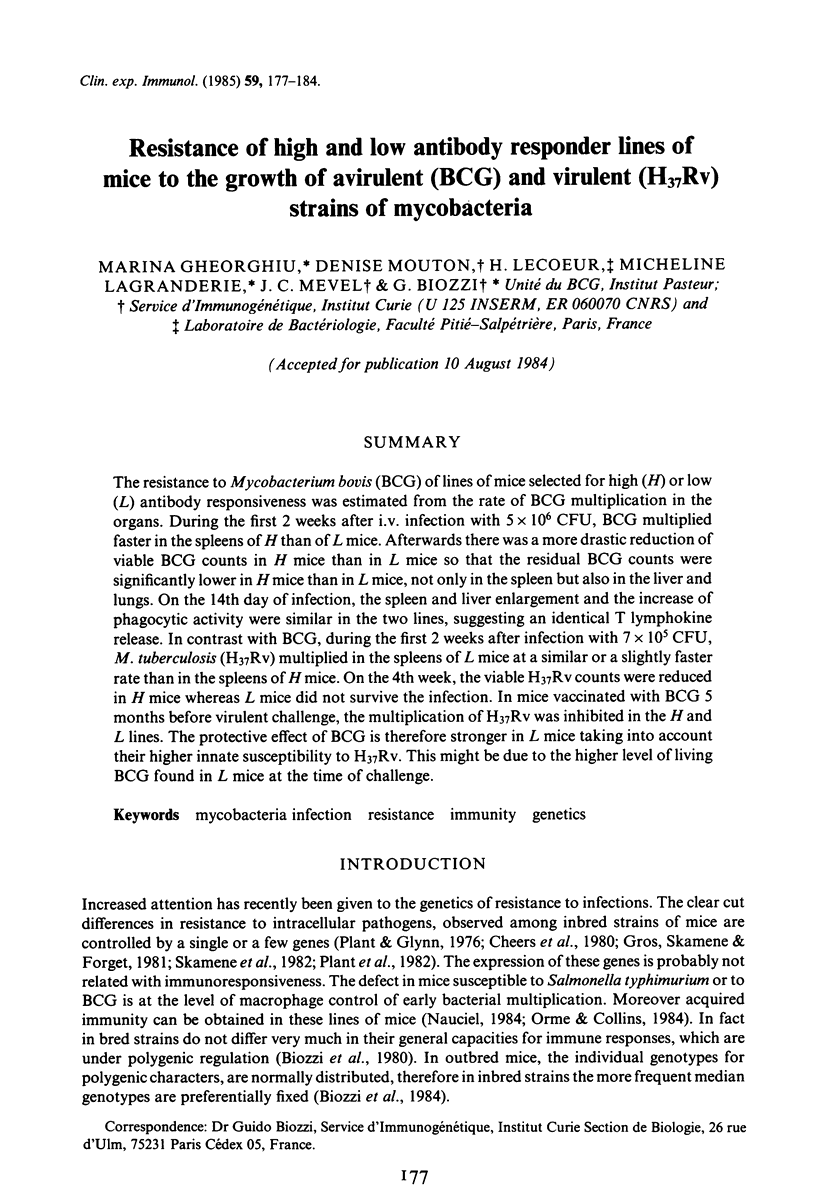
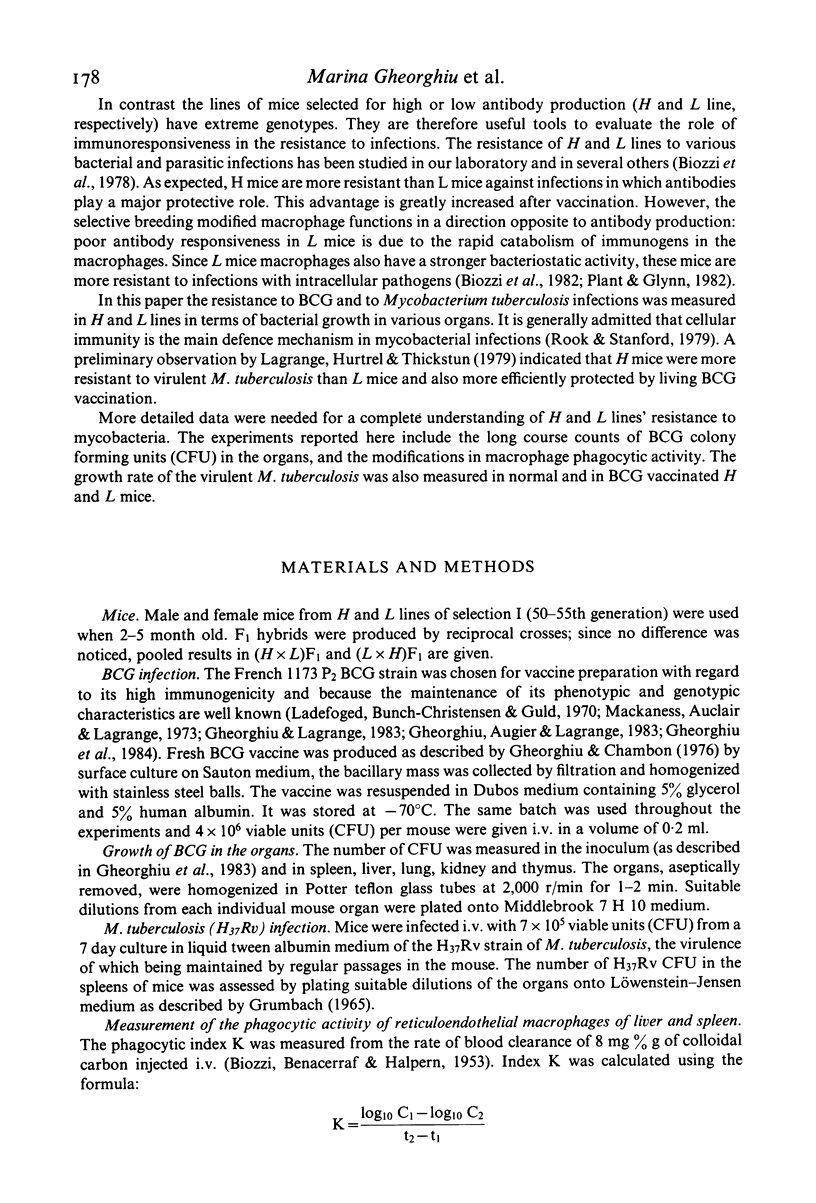
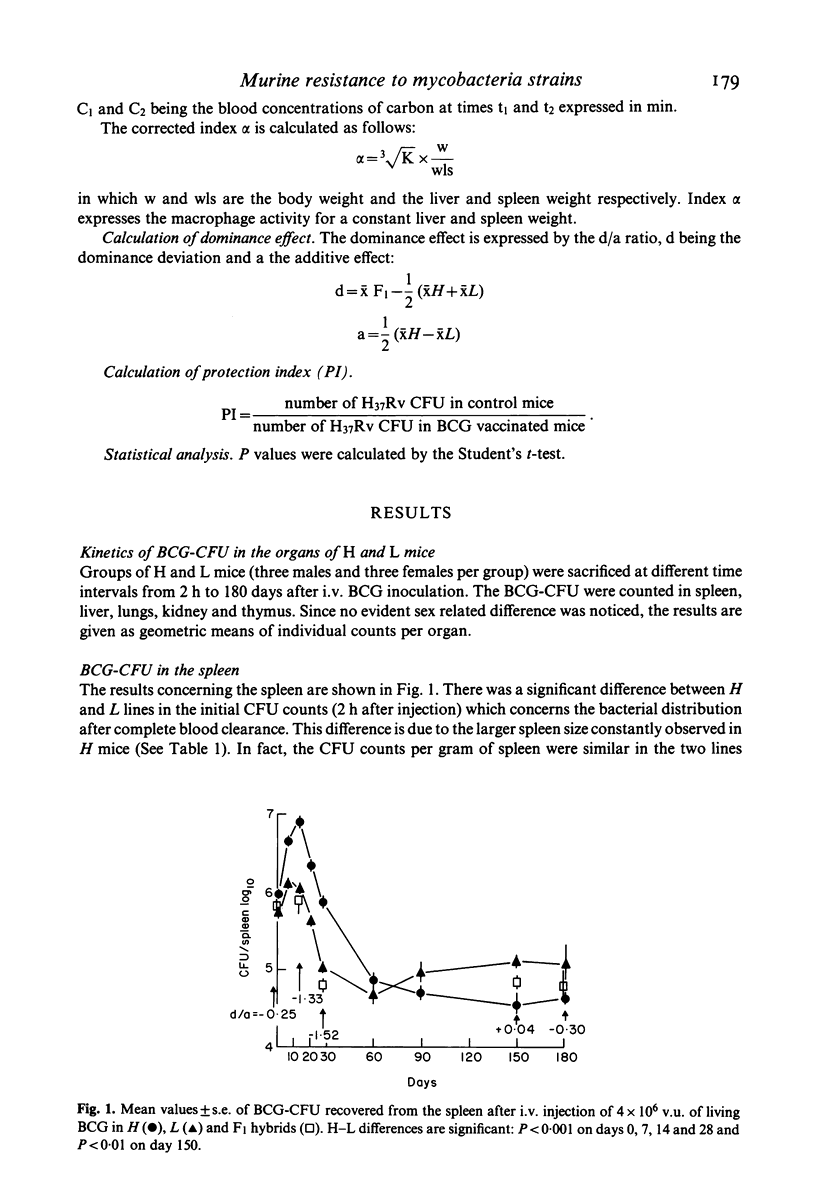
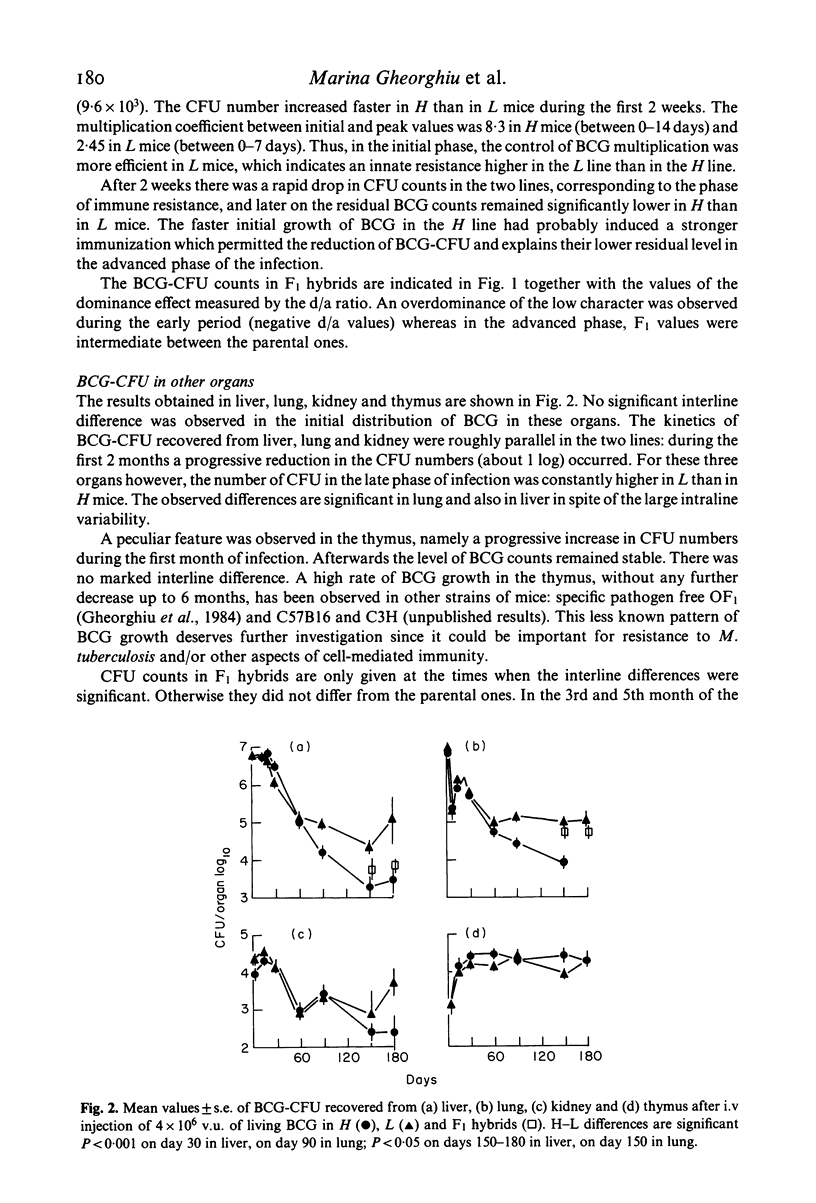
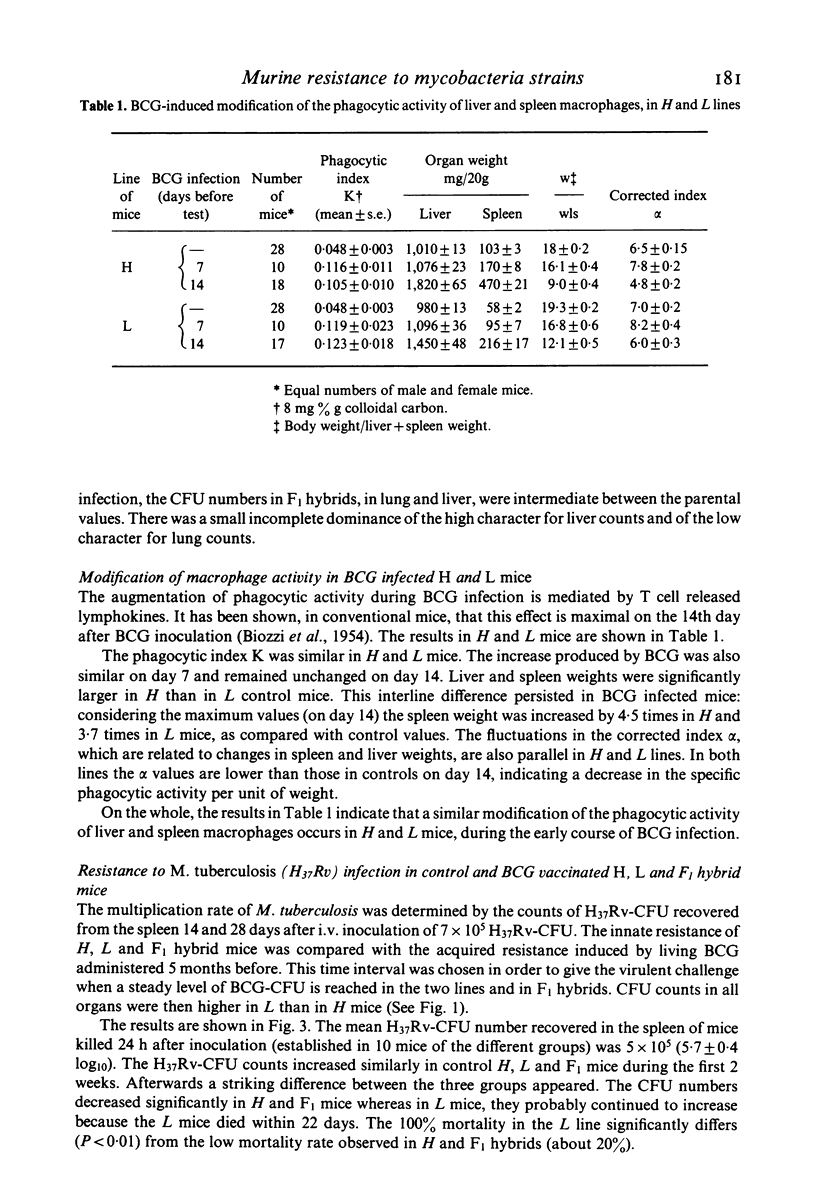
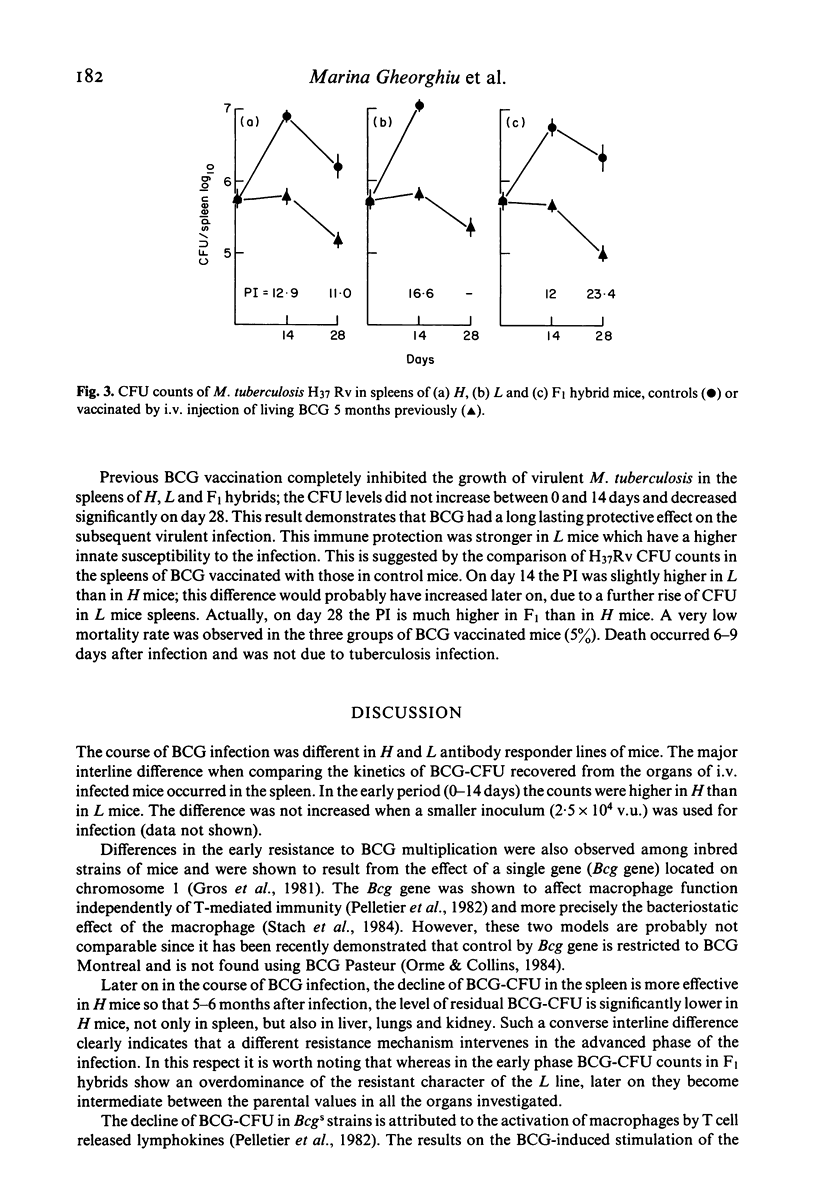
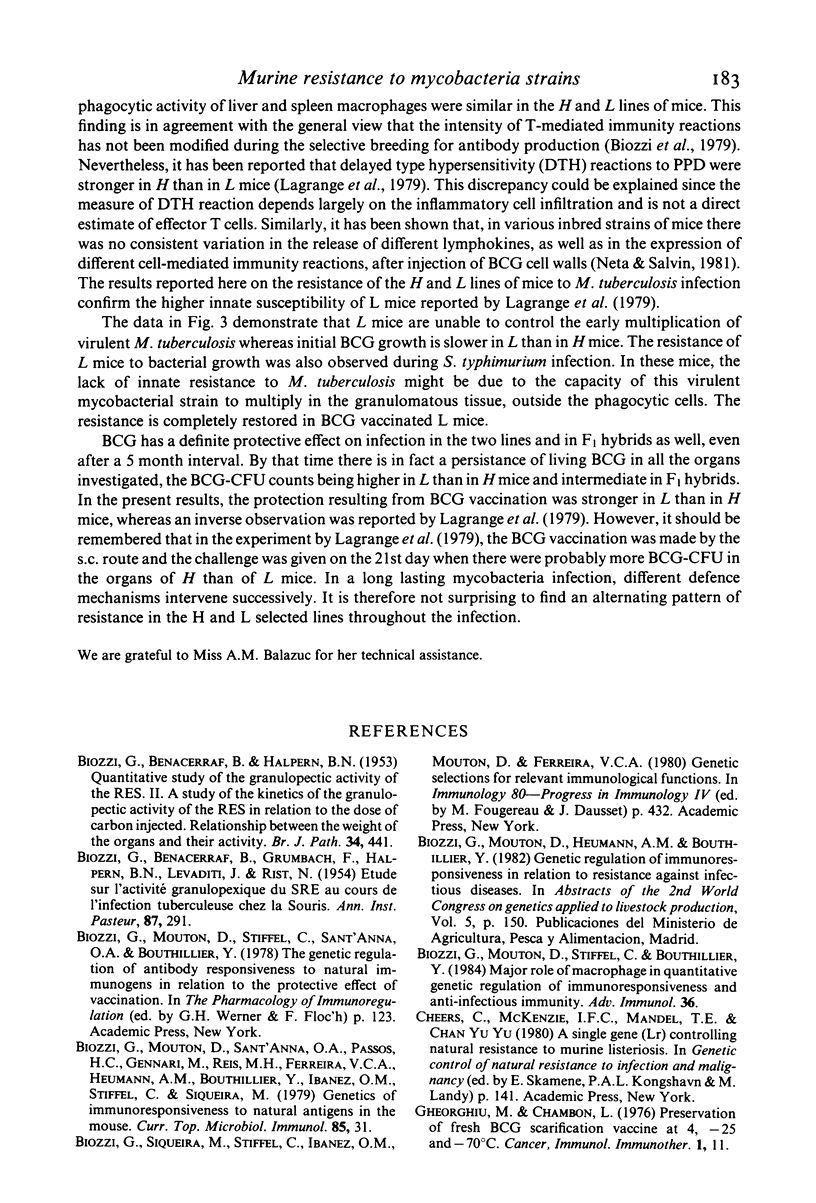
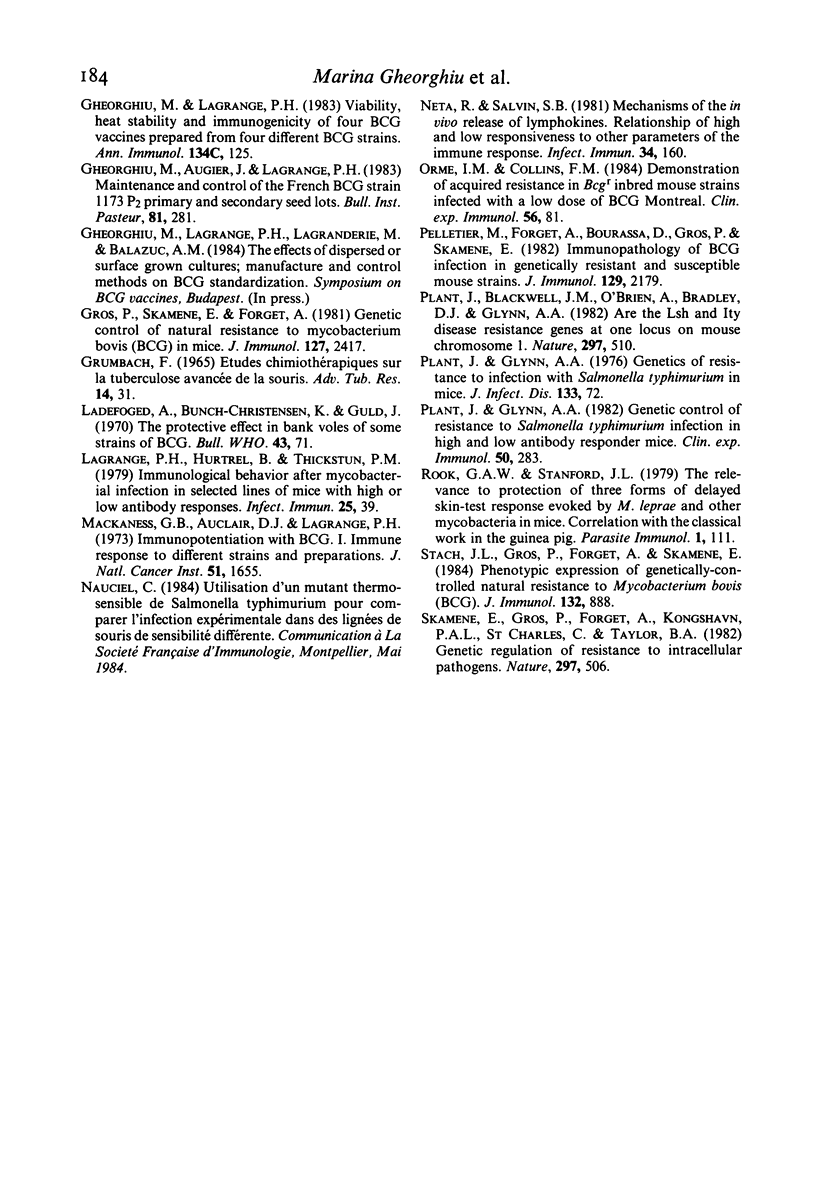
Selected References
These references are in PubMed. This may not be the complete list of references from this article.
- BIOZZI G., BENACERRAF B., GRUMBACH F., HALPERN B. N., LEVADITI J., RIST N. Etude de l'activité granulopexique du système réticulo-endothélial au cours de l'infection tuberculeuse expérimentale de la souris. Ann Inst Pasteur (Paris) 1954 Sep;87(3):291–300. [PubMed] [Google Scholar]
- BIOZZI G., BENACERRAF B., HALPERN B. N. Quantitative study of the granulopectic activity of the reticulo-endothelial system. II. A study of the kinetics of the R. E. S. in relation to the dose of carbon injected; relationship between the weight of the organs and their activity. Br J Exp Pathol. 1953 Aug;34(4):441–457. [PMC free article] [PubMed] [Google Scholar]
- Biozzi G., Mouton D., Sant'Anna O. A., Passos H. C., Gennari M., Reis M. H., Ferreira V. C., Heumann A. M., Bouthillier Y., Ibanez O. M. Genetics of immunoresponsiveness to natural antigens in the mouse. Curr Top Microbiol Immunol. 1979;85:31–98. [PubMed] [Google Scholar]
- Gheorghiu M., Lagrange P. H. Viability, heat stability and immunogenicity of four BCG vaccines prepared from four different BCG strains. Ann Immunol (Paris) 1983 Jan-Feb;134C(1):125–147. doi: 10.1016/s0769-2625(83)80157-3. [DOI] [PubMed] [Google Scholar]
- Gros P., Skamene E., Forget A. Genetic control of natural resistance to Mycobacterium bovis (BCG) in mice. J Immunol. 1981 Dec;127(6):2417–2421. [PubMed] [Google Scholar]
- Ladefoged A., Bunch-Christensen K., Guld J. The protective effect in bank voles of some strains of BCG. Bull World Health Organ. 1970;43(1):71–90. [PMC free article] [PubMed] [Google Scholar]
- Lagrange P. H., Hurtrel B., Thickstun P. M. Immunological behavior after mycobacterial infection in selected lines of mice with high or low antibody responses. Infect Immun. 1979 Jul;25(1):39–47. doi: 10.1128/iai.25.1.39-47.1979. [DOI] [PMC free article] [PubMed] [Google Scholar]
- Mackaness G. B., Auclair D. J., Lagrange P. H. Immunopotentiation with BCG. I. Immune response to different strains and preparations. J Natl Cancer Inst. 1973 Nov;51(5):1655–1667. doi: 10.1093/jnci/51.5.1655. [DOI] [PubMed] [Google Scholar]
- Neta R., Salvin S. B. Mechanisms in the in vivo release of lymphokines: relationship of high and low responsiveness to other parameters of the immune response. Infect Immun. 1981 Oct;34(1):160–165. doi: 10.1128/iai.34.1.160-165.1981. [DOI] [PMC free article] [PubMed] [Google Scholar]
- Orme I. M., Collins F. M. Demonstration of acquired resistance in Bcgr inbred mouse strains infected with a low dose of BCG montreal. Clin Exp Immunol. 1984 Apr;56(1):81–88. [PMC free article] [PubMed] [Google Scholar]
- Pelletier M., Forget A., Bourassa D., Gros P., Skamene E. Immunopathology of BCG infection in genetically resistant and susceptible mouse strains. J Immunol. 1982 Nov;129(5):2179–2185. [PubMed] [Google Scholar]
- Plant J. E., Blackwell J. M., O'Brien A. D., Bradley D. J., Glynn A. A. Are the Lsh and Ity disease resistance genes at one locus on mouse chromosome 1? Nature. 1982 Jun 10;297(5866):510–511. doi: 10.1038/297510a0. [DOI] [PubMed] [Google Scholar]
- Plant J. E., Glynn A. A. Genetic control of resistance to Salmonella typhimurium infection in high and low antibody responder mice. Clin Exp Immunol. 1982 Nov;50(2):283–290. [PMC free article] [PubMed] [Google Scholar]
- Plant J., Glynn A. A. Genetics of resistance to infection with Salmonella typhimurium in mice. J Infect Dis. 1976 Jan;133(1):72–78. doi: 10.1093/infdis/133.1.72. [DOI] [PubMed] [Google Scholar]
- Rook G. A., Stanford J. L. The relevance to protection of three forms of delayed skin-test response evoked by m. leprae and other mycobacteria in mice. Correlation with the classical work in the guinea-pig. Parasite Immunol. 1979 Summer;1(2):111–123. doi: 10.1111/j.1365-3024.1979.tb00699.x. [DOI] [PubMed] [Google Scholar]
- Skamene E., Gros P., Forget A., Kongshavn P. A., St Charles C., Taylor B. A. Genetic regulation of resistance to intracellular pathogens. Nature. 1982 Jun 10;297(5866):506–509. doi: 10.1038/297506a0. [DOI] [PubMed] [Google Scholar]
- Stach J. L., Gros P., Forget A., Skamene E. Phenotypic expression of genetically-controlled natural resistance to Mycobacterium bovis (BCG). J Immunol. 1984 Feb;132(2):888–892. [PubMed] [Google Scholar]


